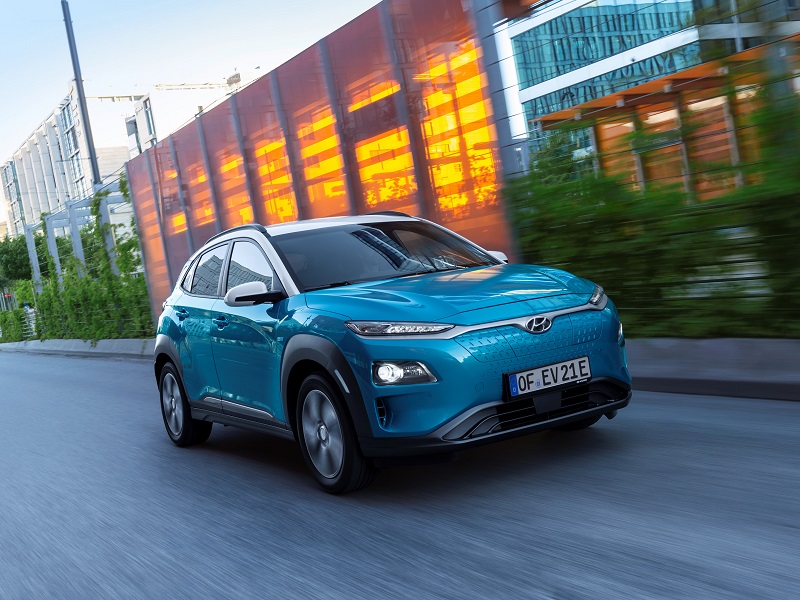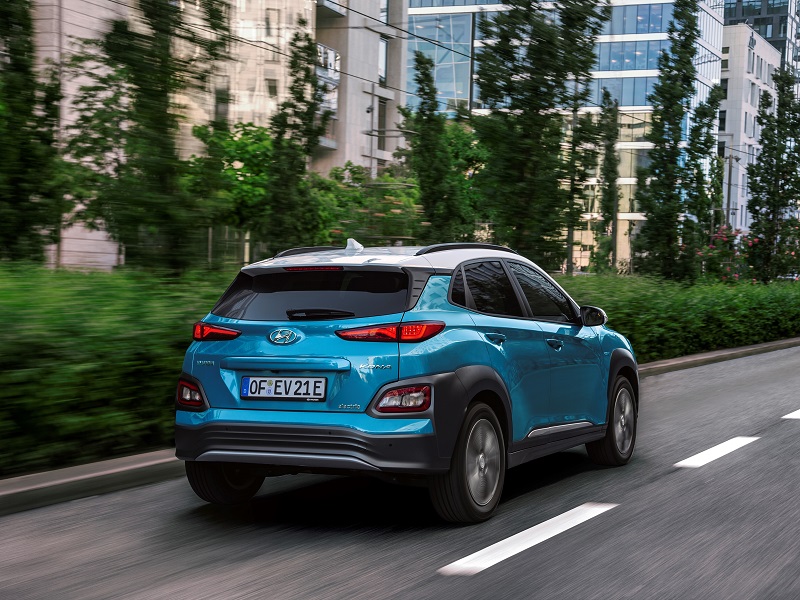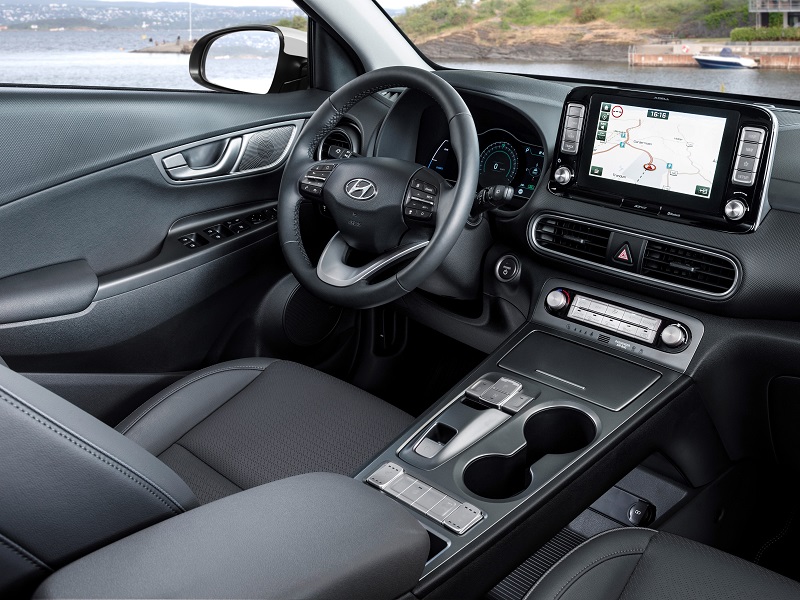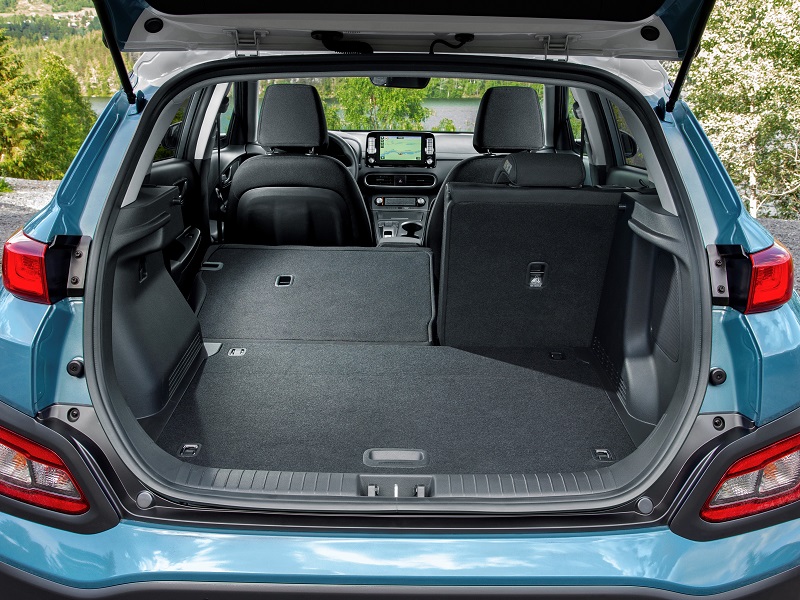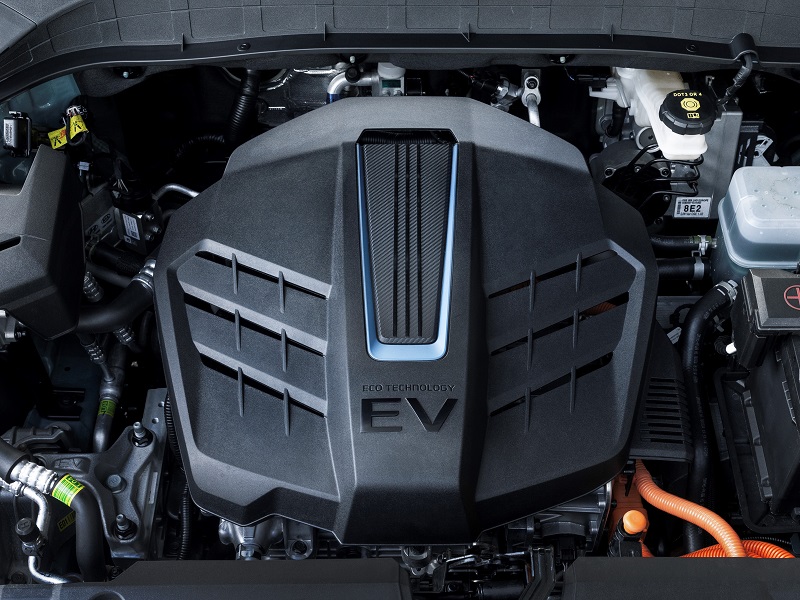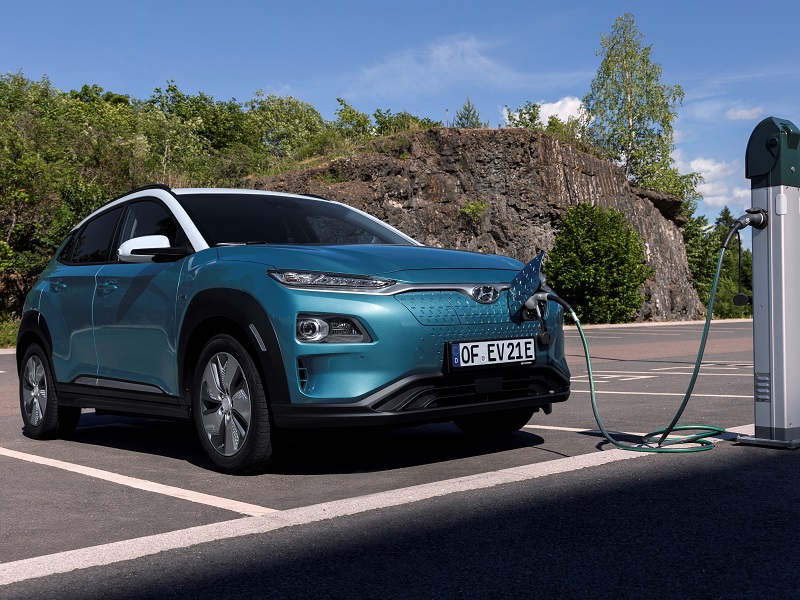First Drive: Hyundai Kona Electric
Hyundai’s electric SUV marks a tipping point for EVs, but there’s a catch. By Alex Grant.
- Hyundai Kona Electric
- Hyundai Kona Electric
- Hyundai Kona Electric
- Hyundai Kona Electric
- Hyundai Kona Electric
- Hyundai Kona Electric
SECTOR Compact SUV PRICE From €34,000 FUEL 312-482km (WLTP) 345-556km (NEDC) CO2 0g/km
From the gawky city runarounds of 10 years ago, electric cars have become rather more mainstream lately. Technology has lengthened ranges and shortened charging times. Consumer demand has brought wider choice, and less divisive styling. And, in the background, talk of air quality has generated interest, eroding the arguments against, one by one.
Hyundai might have the best ‘for’ argument yet. The Kona Electric takes one of the longest-range batteries on the market, and slots it into a car in Europe’s rapidly-growing compact SUV segment. It gives the reassurance drivers need, and the styling they want, without a premium price tag. Which makes it a significant newcomer.
The Kona was engineered with electrification in mind, and that shows up in the packaging. The battery is under the back end, so there’s no loss of cabin or cargo space, and the interior is similar to gasoline or diesel models. It’s a little plasticky, considering the price, but aside from selecting forward, reverse or park with a pad of buttons, there’s nothing unusual to get used to.
Hyundai is offering two versions, defined by the battery capacity and range. The 39.2kWh battery returns 312km (WLTP) to a full charge, while the 64kWh pack extends the range to 482km for the top-spec versions. With a power increase from 136hp to 204hp, plus the extra range, the larger-capacity battery is predicted to be the bigger seller.
If anything, it’s excessive performance for a car in this class. But the Kona is addictively quick, not only off the mark but effortless right up to highway speeds, and seemingly all the more ferocious without gear changes interrupting the acceleration. And, although it’s 300kg heavier than diesel versions, that extra weight is mounted low in the body and paired with a reduced ride height, giving surprisingly sure-footed handling. Green motoring doesn’t have to be boring.
The upshot is, you don’t have to work it hard to make progress. There are four driving modes to stretch the range or performance as needed, plus paddles offering progressively more aggressive regenerative braking, a bit like downshifting on an automatic transmission. On a mixed route, we calculated average energy economy good enough to get around 480km to a charge, falling to 400km on a busy highway. Far enough that drivers would want a break anyway.
Importantly, that break needn’t be too long. The Kona Electric can charge twice as fast as most EVs, regaining 80% of its range in less than an hour, or it will do once there are 100kW chargers to support it. For now, a 50kW rapid charger will get it to the same level in two hours, while AC charging takes nine. But, per mile, that’s no slower than its rivals.
So, where’s the catch? Well, with restricted supply, the focus for now is online sales to retail customers, which will delay the fleet recognition it deserves. Ironic, really, that the biggest barrier to mainstream EV uptake these days is building enough cars to meet the demand.
What We Think:
The Kona Electric feels like a tipping point; an EV for one-car families, with little stacked against it. But it could be a while before fleets see the benefits.

